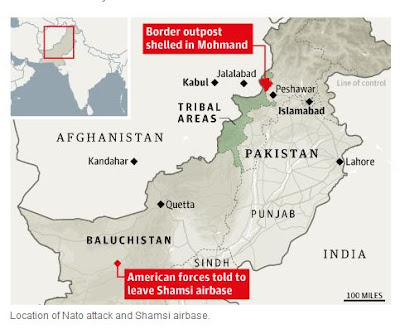
After three action-packed weeks in San Francisco, the traveling murals are now being set up in
Kansas and Missouri.
12 November - 30 December
KCMO Central Library, Kansas
Johnson County Library, MO
In San Francisco the murals were divided between the University of San Francisco and the Islamic Cultural Center of Northern California. For the next exhibit, they will again be divided between public libraries.
Check out the exciting
events that are planned. They include a forum for youth voices, AFSC staff, Afghan activists, veteran peacemakers and an evening with Kathy Kelly.
Mural Image:
What's Left of KabulCreated by Guilford College Community and Hanna Swenson, Courtney Mandeville and Layth AwartaniIf you have any friends or family in the area, please share this link.
KCMO Central Library (Exhibit Opens November 12)
14 West 10th St.
Kansas City, MO
KCMO Central Library Hours:
Monday-Wednesday: 9am-9pm
Thursday: 9am-6pm
Friday: 9am-5pm
Saturday: 10am-5pm
Sunday: 1pm-5pm
Johnson County Central Resource Library(Exhibit Opens November 19)
9875 W. 87th St.
Overland Park, KS
Johnson County Central Resource Library Hours:
Monday-Thursday: 9am-9pm
Friday: 9am-6pm
Saturday: 9am-5pm
Sunday: 1pm-5pm
*******************
KCMO Central Library
*******************
Sunday 13 November
Reception | 1 PM
Mike Ferner | 2-3 PM
A Veteran Reflects on the Afghan Windows and Mirrors Exhibit
Sunday 11 December 2 PM:
Kathy KellyCourage for Peace: Perspectives from Afghanistan
Kathy is the co-coordinator of Voices for Creative Nonviolence
*************************************
Johnson County Central Resource Library
************************************
Saturday 19 November
Reception | 1:30 PM
KC Area Youth Reflections on Afghan War | 2:00 PM
Peter Lems | Afghanistan: What's Next?
Sunday 4 December 2 PM
Suraya SadeedDirector, Help the Afghan Children
Forbidden Lesson in a Kabul Guesthouse (book)
*****************
Speaker Background
*****************
Mike Ferner Mike served two terms on Toledo City Council, organized for the public employees’ union, AFSCME, and worked as Communications Director for the Farm Labor Organizing Committee (FLOC), and for the Program on Corporations, Law & Democracy. He traveled to Iraq twice, with a Voices in the Wilderness delegation just prior to the U.S. invasion in 2003, and in 2004 for two months as a freelance writer. His book about those trips, Inside the Red Zone: A Veteran For Peace Reports from Iraq, (Praeger) was released in September, 2006, days before Mike was released from two months house arrest for painting “Troops Out Now!” on a highway overpass. He has been arrested several times for protesting the war in Iraq, including disrupting a Congressional hearing. He served as a Navy Hospital Corpsman during Vietnam, taking care of hundreds of wounded soldiers, was discharged as a conscientious objector and is on the national board of Veterans For Peace. Mike participated in a December 2010 delegation to Afghanistan.
Suraya SadeedSuraya was born and raised in Kabul, Afghanistan and immigrated to the United States after the Soviet Union invaded Afghanistan. In the US she became a successful business woman. During the height of the Afghan Civil War (1993), Suraya returned to Afghanistan and was shocked by the horrific conditions of children and the destruction of her homeland. That same year, she established a non-profit organization; Help the Afghan Children, Inc. Since then, Suraya's courageous efforts in providing humanitarian aid, medical care, education, and hope against seemingly insurmountable odds in some of the most inhospitable conditions imaginable, have directly benefited an estimated 1.7 million Afghan children and their families.
Help the Afghan Children was AFSC’s partner for our first delivery of funds to Afghanistan in 2001 to mitigate the suffering.
Kathleen Kelly Kathy Kelly co-coordinates Voices for Creative Nonviolence, (www.vcnv.org) a campaign to end U.S. military and economic warfare. During late June and early July of 2011, Kelly, 58, was a passenger on the “Audacity to Hope” as part of the US Boat to Gaza project. She also attempted to reach Gaza by flying from Athens to Tel Aviv, as part of the Welcome to Palestine effort, but the Israeli government deported her back to Greece.
Since May 2010, she has visited Afghanistan four times with small delegations intent on learning more about conditions faced by ordinary people in Afghanistan, a country afflicted by three decades of warfare. Voices for Creative Nonviolence has been working closely with the Afghan Youth Peace Volunteers in search of non-military solutions to end the war.
In 2009, she lived in Gaza during the final days of the Operation Cast Lead bombing; later that year, Voices formed another small delegation to visit Pakistan, aiming to learn more about the effects of U.S. drone warfare on the civilian population and to better understand consequences of U.S. foreign policy in Pakistan. From 1996 – 2003, Voices activists formed 70 delegations that openly defied economic sanctions by bringing medicines to children and families in Iraq. Kathy and her companions lived in Baghdad throughout the 2003 “Shock and Awe” bombing.
She was sentenced to one year in federal prison for planting corn on nuclear missile silo sites (1988-89) and spent three months in prison, in 2004, for crossing the line at Fort Benning’s military training school. As a war tax refuser, she has refused payment of all forms of federal income tax since 1980.
She and her companions at the Voices home/office in Chicago believe that non-violence necessarily involves simplicity; service, sharing of resources and non-violent direct action in resistance to war and oppression.
Kathy organized and participated in the Spring 2011 delegation to Afghanistan to join the Afghan Youth Peace Volunteers in their campaign Live Without Wars.














